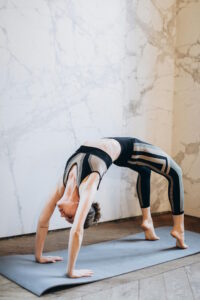
Starting any new fitness routine, especially one as versatile and transformative as Pilates, can be both exciting and intimidating. As a beginner, you may have questions about where to begin, which type of Pilates is best, and how to start practicing at home. In this comprehensive guide, we will explore the world of Pilates for beginners, addressing common concerns and providing you with a roadmap to embark on your Pilates journey with confidence.
Which type of Pilates is best for beginners?
Pilates offers various styles and approaches, making it accessible to beginners. However, some types of Pilates are particularly well-suited for those new to the practice:
1. Mat Pilates: Mat Pilates is an excellent starting point for beginners as it requires minimal equipment—just a comfortable exercise mat. It focuses on foundational movements that develop core strength, flexibility, and body awareness. Mat Pilates provides a solid introduction to Pilates principles and can be practiced at home or in a studio with a qualified instructor.
2. Classical Pilates: Classical Pilates, also known as “Contrology,” adheres closely to the original teachings of Joseph Pilates. It emphasizes precise movements and the development of core strength. While it can be challenging, beginners who prefer a structured and traditional approach may find it beneficial.
3. Pilates for Beginners Classes: Many Pilates studios offer classes specifically designed for beginners. These classes introduce newcomers to fundamental exercises and focus on proper form and technique. They often incorporate modifications to accommodate different fitness levels and physical abilities.
4. Private Sessions: If you’re looking for personalized guidance and attention, private Pilates sessions with a certified instructor can be an excellent choice. Instructors can tailor workouts to your specific needs and gradually introduce more advanced exercises as you progress.
Is Pilates good for beginners?
Yes, Pilates is an excellent fitness option for beginners. Here’s why:
1. Low Impact: Pilates is a low-impact exercise, which means it is gentle on the joints. It’s suitable for individuals of all fitness levels, including those who may have joint issues or are recovering from injuries.
2. Core Strength: Pilates places a strong emphasis on core strength, making it an ideal practice for beginners looking to improve their posture and overall stability.
3. Flexibility: Pilates incorporates stretching and flexibility exercises, which can help beginners increase their range of motion and reduce muscle tightness.
4. Mind-Body Connection: Pilates encourages a deep mind-body connection through focused movements and controlled breathing. This aspect can enhance body awareness and mindfulness, helping beginners connect with their bodies.
5. Gradual Progression: Pilates exercises can be modified to suit different fitness levels. Beginners can start with foundational movements and gradually advance to more challenging exercises as they build strength and confidence.
6. Holistic Benefits: In addition to physical fitness, Pilates offers holistic benefits, including stress reduction, improved mental clarity, and enhanced well-being.
How do I start Pilates at home for beginners?
Starting Pilates at home as a beginner is a convenient and accessible option. Here’s a step-by-step guide to help you begin your Pilates journey from the comfort of your own home:
1. Set Up a Dedicated Space: Choose a quiet, clutter-free area in your home where you can practice Pilates comfortably. Lay down an exercise mat to provide cushioning and support.
2. Find Online Resources: There are plenty of online resources, including instructional videos and Pilates apps, specifically designed for beginners. Look for reputable sources and instructors who provide clear and detailed guidance.
3. Start with Basic Exercises: Begin with foundational Pilates exercises that focus on core engagement, proper breathing, and alignment. Some common beginner exercises include the Pilates Hundred, The Roll-Up, and The Single Leg Circle.
4. Focus on Form and Technique: Pay close attention to your form and technique as you perform each exercise. Proper alignment is key to maximizing the benefits and minimizing the risk of injury.
5. Incorporate Controlled Breathing: Pilates places great importance on controlled breathing. Coordinate your breath with your movements, inhaling through the nose and exhaling through the mouth.
6. Gradually Increase Intensity: As you become more comfortable with basic exercises, you can gradually incorporate more challenging movements and sequences into your routine. Don’t rush the progression; listen to your body and advance at your own pace.
7. Stay Consistent: Consistency is key to seeing progress in Pilates. Aim to practice regularly, whether it’s a few times a week or daily, depending on your schedule and goals.
8. Seek Professional Guidance: While practicing at home is convenient, it’s beneficial to take occasional classes with a certified Pilates instructor. They can provide corrections and modifications tailored to your needs, ensuring you’re on the right track.
9. Monitor Your Progress: Keep a journal or make notes of your Pilates practice to track your progress and celebrate your achievements along the way.
In summary, Pilates for beginners is an accessible and beneficial fitness practice that can be practiced at home. Start with foundational exercises, focus on proper form and controlled breathing, and gradually progress to more challenging movements. Online resources and occasional classes with a certified instructor can provide valuable guidance and support. Remember that consistency and patience are key to reaping the full benefits of Pilates as a beginner.